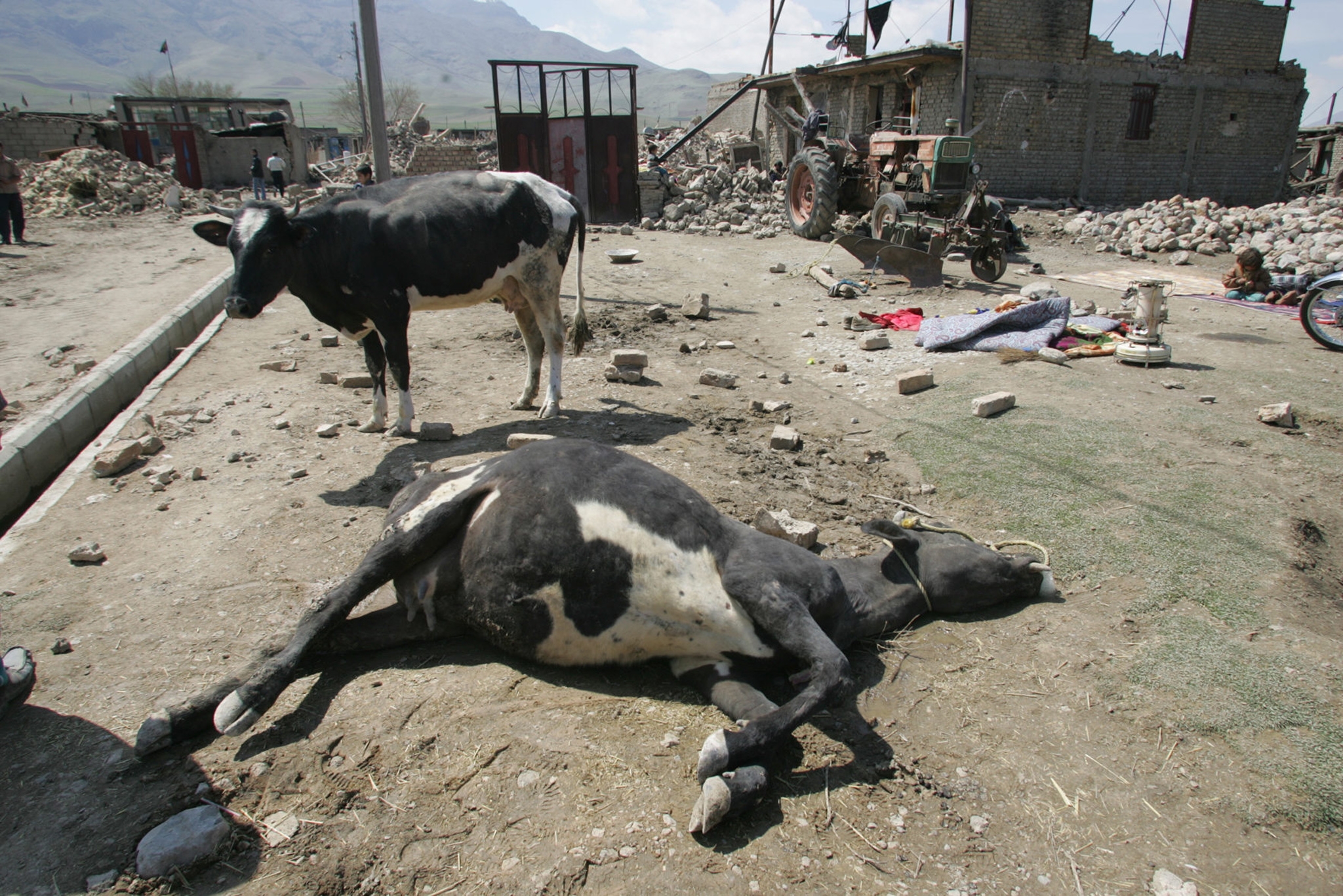Iranian press review: Leech breeding a bloody business in sanctions-hit Iran

Cattle blood illegally traded for breeding leeches
A reporter at the Khorasan daily has gone undercover to investigate the illegal market of cattle blood in the holy city of Mashhad, where the shrine of the eighth imam of Twelver Shia is located.
The cattle blood is used for breeding leeches, which are used for leech therapy, the paper reported. Khorasan’s reporter went to a poor neighbourhood of Mashhad and bought two litres of blood from “freshly slaughtered cattle” for 500,000 rials (about $3.30 according to the prices in exchange offices).
The crisis in Iran's economy has led to traditional medicine becoming popular again in the country. Following the 2018 US re-imposition of sanctions, Iranians have experienced a sharp rise in the price of healthcare and subsequently have looked for traditional treatments.
The newspaper's reporter interviewed a leech breeder, who claimed that “everything is underground” in the leech breeding business.
New MEE newsletter: Jerusalem Dispatch
Sign up to get the latest insights and analysis on Israel-Palestine, alongside Turkey Unpacked and other MEE newsletters
“The leech needs blood to grow and only the matured ones are used in traditional medicine,” he told the paper. “Since there is no official mechanism and no control on this business everything takes place underhandedly.”
Meanwhile, the head of Mashhad’s veterinary network Mahmoud Javadinejhad rejected all claims about illegal trade of cattle blood and told the newspaper that he has not seen or heard any reports on blood from slaughterhouses being sold to leech breeders.
Iranian activists reject possible war with US
Journalists and political activists have taken to social media in Iran using Farsi hashtags such as “trapped by war” to raise their voice against the looming shadow of a possible war with the United States. They have also defended Iran’s rights to take retaliatory measures against new American sanctions.
On 8 May, Iranian authorities said Iran is quitting parts of the 2015 nuclear deal in response to the US pullout from the agreement. Iran’s move comes days after the US deployment of an aircraft carrier strike group and B-52 bombers to the Gulf.
In reaction to the latest developments, activists such as Emad Bahavar warned about the high risks of an Iran-US war. Bahavar is a former political prisoner who was arrested after the 2009 disputed presidential elections in Iran and spent five years in prison.
“There are high possibilities for a military confrontation,” Bahavar wrote on Twitter. “It might seem as if both sides have no interest in starting the conflict, but war is a trap which is being set. And usually the weaker country will fall into it.”
Meanwhile, Iranian journalist and activist Amir Raeefard sees Iran’s recent move as a “logical reaction” to the US withdrawal from the nuclear deal.
“From today a new phase of provocations will begin to push Iran into a war. It’s serious and dangerous. A war is possible. We should not fall into this trap,” Raeefard tweeted.
Depression on the rise among Iranians
Health Minister Saeed Namaki has warned about the increasing number of Iranians suffering from depression and urged authorities to “inject exhilaration into society” and to prevent the spread of “despair and frustration,” ISNA news agency reports.
Namaki stressed that a nationwide campaign is needed to tackle this issue, adding: “We should all help one another, and artists and media managers should give hope to society.”
Namaki has not elaborated more on the state of mental health in Iran, however on 17 April, Iraj Harirchi, a health ministry spokesperson, said 23.4 percent of Iranians suffer from a “mental disorder”.
Harirchi added that this number is much higher in thecapital and that “one-third of all residents in Tehran” struggle with a type of mental health issue. Social, political and economic pressures are the main sources of depression among Iranians, according to Harirchi.
Moreover, a study published in Iranian Journal of Psychiatry set the number of depressed Iranians higher than the official figures, estimating that the prevalence of depression among elderly Iranians was 43 percent in 2015.
Tehranis squeezed out of the capital
Economists in Tehran are alarmed about the speeding rate of migration from Tehran to cities surrounding the Iranian capital.
Since the middle of the 1960s and the acceleration of industrialisation in Iran, one of the main issues facing the country has been the migration of the population from villages to cities.
However, with Iran in economic crisis under US sanctions, citizens of Tehran are struggling with the cost of living in their city.
On 5 May, IRNA news agency reported that the number of citizens leaving Tehran “has recently increased”. Job losses, expensive rents and a high cost of living in Tehran are the leading causes that IRNA listed as behind the new wave of migration from Tehran to cheaper satellite cities.
Meanwhile, ISNA news agency reported that the number of construction projects in Tehran had seen a 20 percent increase, while real estate trading witnessed a 37 percent fall during the same period. Declining purchasing power has been the primary reason for the drop, according to ISNA.
Middle East Eye delivers independent and unrivalled coverage and analysis of the Middle East, North Africa and beyond. To learn more about republishing this content and the associated fees, please fill out this form. More about MEE can be found here.




